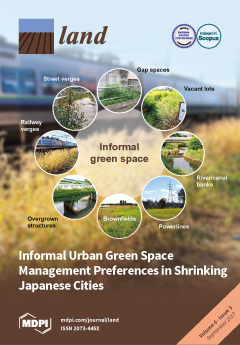Resource information
This paper presents an evaluation of the multi-source satellite datasets such as Sentinel-2, Landsat-8, and Moderate Resolution Imaging Spectroradiometer (MODIS) with different spatial and temporal resolutions for nationwide vegetation mapping. The random forests based machine learning and cross-validation approach was applied for evaluating the performance of different datasets. Cross-validation with the rich-feature datasets—with a sample size of 390—showed that the MODIS datasets provided highest classification accuracy (Overall accuracy = 0.80, Kappa coefficient = 0.77) compared with Landsat 8 (Overall accuracy = 0.77, Kappa coefficient = 0.74) and Sentinel-2 (Overall accuracy = 0.66, Kappa coefficient = 0.61) datasets. As a result, temporally rich datasets were found to be crucial for the vegetation physiognomic classification. However, in the case of Landsat 8 or Sentinel-2 datasets, sample size could be increased excessively as around 9800 ground truth points could be prepared within 390 MODIS pixel-sized polygons. The increase in the sample size significantly enhanced the classification using Landsat-8 datasets (Overall accuracy = 0.86, Kappa coefficient = 0.84). However, Sentinel-2 datasets (Overall accuracy = 0.77, Kappa coefficient = 0.74) could not perform as much as the Landsat-8 datasets, possibly because of temporally limited datasets covered by the Sentinel-2 satellites so far. A combination of the Landsat-8 and Sentinel-2 datasets slightly improved the classification (Overall accuracy = 0.89, Kappa coefficient = 0.87) than using the Landsat 8 datasets separately. Regardless of the fact that Landsat 8 and Sentinel-2 datasets have lower temporal resolutions than MODIS datasets, they could enhance the classification of otherwise challenging vegetation physiognomic types due to possibility of training a wider variation of physiognomic types at 30 m resolution. Based on these findings, an up-to-date 30 m resolution vegetation map was generated by using Landsat 8 and Sentinel-2 datasets, which showed better accuracy than the existing map in Japan.


